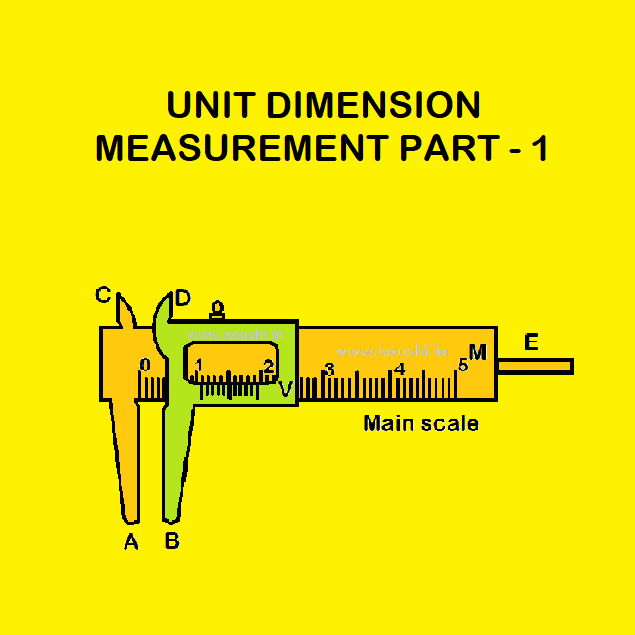Dimension: All the physical quantities are derived from some fundamental quantities. Any physical quantity is expressed in terms of the product of different powers of the fundamental quantities. The exponent of fundamental quantities that represents the expression is called the dimension of that physical quantity. Consider a physical quantity speed = ![]() =
= ![]() = length
= length ![]() (time)-1 = LT-1.
(time)-1 = LT-1.
So, dimensions of speed are 1 in length and -1 in time.
Dimensions of fundamental physical quantities are respectively Mass – [M], Length – [L], Time – [T], Thermodynamic temperature – [K], Amount of substance – [mol], current – [I], Luminous intensity – [cd].
Dimensional variable: area, volume, work done etc.
Non dimensional variable: angle, specific gravity, strain, refractive index etc.
Dimensional constant: Plank’s constant, gravitational constant, speed of light in vacuum etc.
Non dimensional constant: any number like 1, 2, ![]() etc.
etc.
Principle of homogeneity: Dimension of the fundamental quantities of both side of equation must be same. We can add or subtract same dimensional quantities.
Find dimension from equation:
S = vt + ![]() where s is distance and t is time. Then dimension of v =
where s is distance and t is time. Then dimension of v = ![]() = [LT-1] dimension of a = [T] and [s] =
= [LT-1] dimension of a = [T] and [s] = ![]()
So, [k] = [s][t] = [LT].
Derive equations using dimension: Time period of a pendulum (T) depends on length of the pendulum (l) and gravitational acceleration (g). Derive the relation between T, l and g.
Let us consider, time period of a pendulum depends on length of the pendulum and gravitational acceleration as
T ![]() la and T
la and T ![]() gb.
gb.
Therefore T ![]() lagb so, T = Klagb ——(i) [where K is a dimensionless constant]
lagb so, T = Klagb ——(i) [where K is a dimensionless constant]
The dimensions of T, l and g are respectively [T], [L] and [LT-2].
Using the dimensions in equation (i) we get, [T] = [La][LT-2]b
Or, [L0][T1] = [La+bT-2b]
Comparing the power of the both side of equation we get,
a+b = 0 —–(ii)
-2b = 1 ——-(iii)
From equations (ii) and (iii) a = + ![]() and b = –
and b = – ![]() .
.
Using the values of a and b in equation (i) we get, T = Kl1/2g-1/2 = K ![]() .
.
Conversion from one system of unit to other unit using dimension:
Let us consider a physical quantity X depends on some fundamental quantities like X = [M]a[L]b[T]c.
In one unit the value of X is n1[M1]a[L1]b[T1]c .
In other unit the value of X is n2[M2]a[L2]b[T2]c.
Therefore X = n1[M1]a[L1]b[T1]c = n2[M2]a[L2]b[T2]c
![]() n2 = n1
n2 = n1 ![]()
Example: Convert 2 joule of energy to its C.G.S. unit.
Energy E = [ML2T-2] where a = 1, b = 2 and c = -2.
In SI unit | In C.G.S. unit |
N1 = 2 | N2 = ? |
M1 = 1kg | M2 = 1g |
L1 = 1m | L2 = 1cm |
T1 = 1s | T2 = 1s |
N2 = 2 ![]() = 2
= 2 ![]() = 2
= 2 ![]() 107
107
Therefore, 2 joule = 2 ![]() 107 erg.
107 erg.
Limitation of dimension: (i) In this method the value of dimensionless constant cannot be calculated.
(ii) If a physical quantity is sum or difference of two or more physical quantities then that physical quantity cannot be derived by dimensional analysis.
(iii) The equations containing trigonometric functions, exponential function or logarithmic terms cannot be analysed by this method.
Click the button to go to the next part of this chapter.
